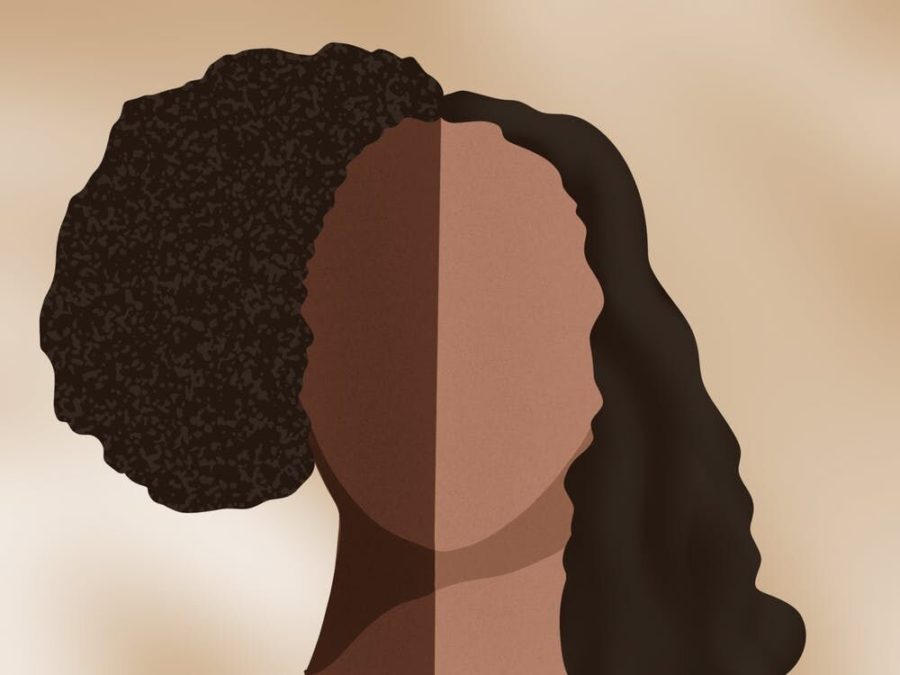What is colorism?
Colorism can be defined as prejudice or discrimination against individuals with a dark skin tone, typically among people of the same ethnic or racial group.
March 11, 2021
Iowa State students and staff explained how colorism, or discrimination based on skin tone, can profoundly impact communities of color.
Distinct from racism, colorism can occur within members of a single racial or ethnic group.
Bria Felix, president of the Womxn of Color Network, explained that colorism is “prejudice against darker-skinned people, no matter the race.”
An Iowa State student, who wished to remain anonymous for this article because they did not want to be “seen as a spokesperson for the entire race,” explained that both racism and colorism are linked to white supremacy, but they are not synonymous.
“Racism is the discrimination of someone who belongs to an ethnic group,” the student said. “Colorism goes even deeper than that; it is the unfair treatment of those who have darker skin tones.”
Felix echoed this idea, explaining that colorism is very similar to racism.
“Colorism could be considered the child of racism,” she said. “It’s very close to racism, but it isn’t quite there yet.”
This semester, more than 15 percent of Iowa State students identify as multicultural, according to enrollment statistics. Students of color can experience both racism and colorism, but experiencing both can be detrimental to their well-being and self-perception.
“For folks with darker skin, it’s not if they’ve experienced it but when and how,” said Denise Williams-Klotz, assistant director of Multicultural Student Affairs at Iowa State.
The anonymous student described experiencing both colorism and racism as “exhausting” and “like being weighed down by many different systems of oppression.” They said it can make them feel “undesirable, unwanted and not valued.”
While colorism can occur to any race or ethnicity, it has particularly impacted the Black community, according to Felix.
“If there is something in the Black community that divides us, it’s colorism,” she said.
There are many culturally and historically significant roots of colorism in the Black community, Felix explained.
“Slave owners favored the light-skinned slaves for their lighter skin and less nappy hair,” she said. “This is because they were perceived to be closer to white people in identity because of what they physically looked like.”
Light- and dark-skinned slaves were further divided by slave owners who granted lighter-skinned people special privileges, reinforcing proximity to white as superior.
Williams-Klotz explained these privileges were determined using tests, such as the “brown paper bag test,” to determine if they were light enough to deserve special treatment.
The brown paper bag test compared a Black person’s skin tone to a brown paper bag. According to Wright State University, if the person’s skin was lighter than the bag, they were considered closer to white and therefore more “desirable” or worthy of certain privileges, such as performing domestic chores instead of hard manual labor.
The conflict between light- and dark-skinned Black people did not end with the abolition of slavery. Felix explained that some light-skinned Black people today try to distinguish themselves from other Black people in order to receive better treatment from white people.
“Growing up in middle school, the brown and dark-skinned girls were treated much worse than the light-skin girls,” Felix said. “It always felt like there was a divide.”
She remembered being called harmful derogatory names not for her race but for the darker tone of her skin.
“While everyone else was compared to caramel, you would be compared to poop and sewage,” she said.
According to Williams-Klotz, colorism has also influenced beauty standards, which are often based on the racist assumption that white is preferable to dark.
“You see people trying to lighten their skin, trying to do makeup that lightens and brightens or avoiding the sun so they don’t get darker,” Williams-Klotz explained. “It’s incredibly harmful because it ungirds this expectation that dark skin is not beautiful.”
Felix explained that skin-bleaching products and advertisements are targeted toward populations with more dark-skinned individuals.
She described light skin as earning “favoritism,” feeding into the perception of light skin as more deserving and stripping dark-skinned individuals of positive qualities like beauty.
“Someone can deem you worthy or unworthy of deserving respect and love based on how light or dark your skin is,” Felix said.
Both of the students interviewed agreed that Iowa State does not offer adequate resources for students experiencing racial discrimination of any form.
“Iowa State doesn’t offer many resources when dealing with racism, so the resources for dealing with colorism are even smaller and harder to come by,” the anonymous student said.
The student advised people of color to reach out to others who can relate to their experiences and find a support system to help discuss issues of colorism and discrimination.
Felix further emphasized the lack of awareness and resources available to students of color experiencing racial discrimination.
“I don’t know of any resources Iowa State has for students dealing with [colorism],” Felix said. “I’m not even sure if Iowa State knows it’s an issue some of its students deal with.”
Felix said she feels that incidences of colorism are unavoidable, especially at a predominantly white institution like Iowa State.
Despite its prominence, the anonymous student explained that many white people “do not even know what colorism is, which is a problem itself.”
They said white people should try to educate themselves to support people of color.
“Not being aware of the different systems set in place to oppress folks is a form of privilege that people need to become aware of and dismantle,” the student said.
Williams-Klotz encouraged people to “Think about what your own assumptions are about people you see with lighter skin versus darker skin.”
She pointed to the implicit association test, which assesses individuals’ subconscious biases and preferences. According to the website, the skin tone test “often reveals an automatic preference for light skin relative to dark skin.”
Felix said the best way to prevent and stop colorism is to acknowledge and challenge it.
“Correct people when it happens,” she said. “If you feel like someone is saying something that isn’t right, call them out.”







